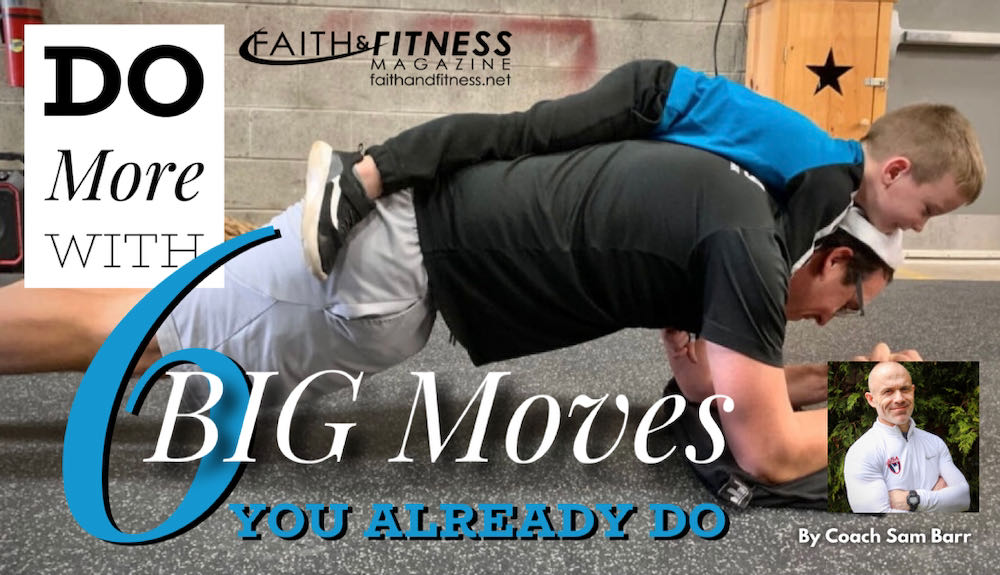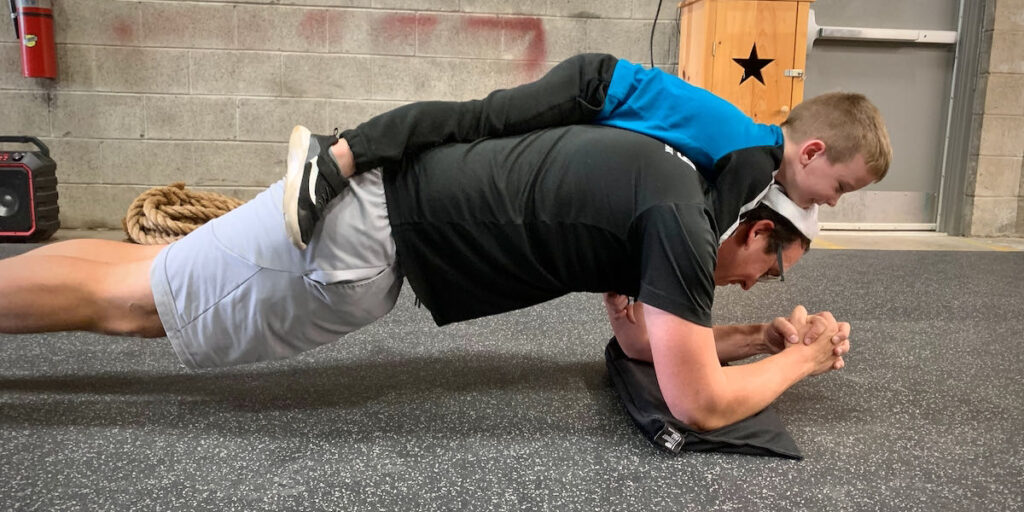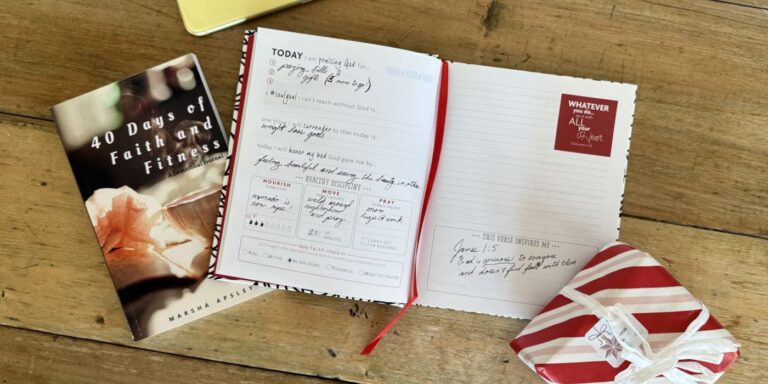Using Progressions for Better Movement Quality
A little over a year ago, I started coaching my good friend and pastor, Guy Smith. When we discussed his personal goals and why they are important to him, this is what he said:
Over the next year, I want to have proved to myself I am capable of weight training. Specifically, I want to be back in my 36″ waist jeans, which will require about 50 pounds of weight loss. This for me is about glorifying God with the body he’s given me in how I care for it. By doing this I’ll have greater energy and joy when playing with my kids, hanging out with my wife, pastoring and preaching, and just life in general. It is difficult to stand before the congregation each weekend when I feel that I look physically undisciplined. It’s important because I want to serve God to my greatest ability for as long as possible.
Awesome goals, both physically and spiritually. Achieving them would take consistent effort, hard work, and the grace of God. While it was tempting to think that we just needed to work hard, working smarter is always better, and that’s exactly the approach I used with Guy.
We started with basic movement patterns and gradually advanced to more complex movements. We used a set of clearly defined progressions to develop his ability to engage in safe, sensible strength training, increase his work capacity, and enhance the effectiveness of his physical training.
While there are intense challenges being the pastor of a growing congregation, Guy has been consistent in the pursuit of his goals and has realized the result of his effort. So far, he has lost 45 pounds, has more energy throughout the day, is moving and feeling better, and can play well with his 4 young kids.
Below, I break down 6 moves you already do. They are the six foundational movement patterns we all do daily. These are the same progressions I used with Guy and many other clients. Learning to master each step in the progression will not only help you to work smarter, but will improve your movement quality, enhance the effectiveness of your training, and help you to be ready for every good work God has called you to do.
GET MOVING – KEEP MOVING
It’s clear that God made us to move, and He made us to move for a reason.
In the very beginning, God tells us how basic movement is to life (Genesis 1:21). Later in the book of Acts (17:28), Paul writes, “In him we live and move and have our being” (ESV).
Followers of Jesus Christ know there are numerous reasons to engage in regular, consistent, progressive exercise (1 Corinthians 6:19-20, Romans 12:1). One in particular that stands out to me is that we want to be ready; ready for every good work (Titus 3:1, 2 Timothy 2:21, Ephesians 2:10). We want to be ready to move toward whatever God calls us to do.
But, practically speaking, what does this movement look like?
As a strength and conditioning coach, I’ll be the first to admit that in the realm of exercise and fitness, ‘movement’ can look a little strange – there are thousands of exercise variations.
Considering that, it’s helpful to know that six movement patterns form the foundation for every movement (or exercise) our bodies are capable of doing. Here they are:
- Squat
- Hinge
- Lunge
- Push
- Pull
- Carry
Simple, right? Only six things! Not quite. Within these six basic movements are a series of progressions that mean everything if you want to move well, feel better, and reach your performance and fitness goals.
Let’s break it down.
The Squat
If you’ve spent any time in the gym, you might quickly think of a barbell back squat. While a back squat is one variation of the squat pattern, it’s by no means the only way to squat. And for most of us, it’s probably not the best place to start.
Think of “squat” as an umbrella term. Under that umbrella, you’ll find exercises like the barbell back squat, front squat, and goblet squat, just to name a few. But improving your ability to squat isn’t about a specific exercise. It’s about finding the appropriate exercise that allows for good movement quality (stability, body position, and control) throughout the full range of motion.
The squat is an important movement pattern because it transcends its use in the gym. It’s used daily for routine activities, like standing from a chair (a lot of that at Sunday morning service ), getting out of a car, or even jumping if the mood strikes.
A safe, sensible squat progression looks like this (video):
- Box Squat
- Bodyweight Squat
- Counterbalance Squat
- Goblet Squat
- Barbell Front Squat
- Barbell Back Squat
The Hinge
The hinge pattern is critical when it comes to protecting your lower back from injury, but it’s also one of the most difficult movements to perform well. This might explain why low-back pain is the most common type of pain reported by patients when they visit the doctor. (1)
From a coach’s viewpoint, I’ve seen that some people don’t hinge well at first because they’ve been avoiding the hinge altogether. This is somewhat understandable (how many times have we been told to lift with your legs, not your back?). Yet, every day we’re required to do something completely different (bend at the waist) to perform a variety of tasks; like getting groceries out of the trunk, for example.
So, if the movement is part of everyday life, and God created us with a hip complex that ‘hinges’, it’s worth taking the time to follow a solid progression and master the hinge. In doing so, you can strengthen your lower back, avoid injury, tightness, and improve your overall functional strength and mobility.
A safe, sensible hinge progression looks like this (video):
- Glute Bridge on Floor
- Glute Bridge – Shoulders on Bench
- Hip Hinge – Tall Kneeling (Band)
- Hip Hinge – Wall Touches (KB)
- Romanian Deadlift
The Lunge
Single-leg function is another often overlooked movement pattern. Single-leg training simply means that emphasis is placed on one leg, or side, at a time, usually in an asymmetrical (split) stance. So, the “lunge” movement pattern can also be thought of as any unilateral-based movement of the lower body.
It’s important to remember that even with single-leg work, it’s impossible to purely isolate one side from another. There will always be an interplay between left and right sides even out of an asymmetrically split stance.
Single-leg exercises can be challenging so it’s helpful to think of them as developing a skill. Even the first few progressions may highlight previously unknown strength imbalances, biomechanical abnormalities, or neuromuscular control/balance concerns.
However, as you rely on His grace to work your way through the lunge progression over time, you can improve your physical ability and truly unlock your movement quality potential. Think in terms of walking, running, climbing stairs, or stepping over objects throughout the day.
A safe, sensible lunge progression looks like this (video):
- Assisted Split Squat (TRX)
- Assisted Reverse Lunge (TRX)
- Split Squat – Bodyweight
- Split Squat – Weighted
- Reverse Lunge – Bodyweight
- Reverse Lunge – Weighted
- Split Squat (Rear Foot Elevated) – Bodyweight
- Split Squat (Rear Foot Elevated) – Weighted
The Push
There are two push movements related to human movement and exercise: horizontal and vertical. Although they both fall under the umbrella of a push, they are very much different when it comes to the static and dynamic stability of the shoulder complex.
All movement patterns are classified in one of two ways, depending on the contact points with the ground. If the hands or feet are in contact with a stable surface like the ground, the movement is a closed kinetic chain. If the hands or feet move freely through space, it’s an open kinetic chain.
With the push-up, the hands are anchored to the ground, which alters the way the spine, shoulder joint, shoulder blades, and muscles of the region move. In this closed chain, the shoulder blades can move freely against the rib cage requiring more dynamic stability of the muscles controlling this position.
Mastering the push-up progression first, before tackling the vertical push, yields the best result in full-body motor learning. From core and hip stability to upper back and shoulder tension, the push-up is a key player in learning how to develop functional strength.
A safe, sensible push progression looks like this (video):
- High Plank Hold
- Push-up – Bodyweight
- Push-up – Weighted
- Bench Press – Dumbbell
- Bench Press – Barbell
The Pull
The upper-body pull may be the most misunderstood movement pattern of the upper body. Similar to the push, there are both horizontal and vertical pulls.
The most popular “pull” is a vertical motion: the pull-up. From high school gym class to military PT testing, the pull-up has been a part of our culture for decades. But just like the push, pulling variations are the same.
The muscles of the back and shoulders were designed to function as stabilizers for dynamic actions that usually take place in pushing movements. To develop the ability to create full-body stability at the shoulders through the pull, the horizontal pull (the row) should first be mastered before introducing more complex vertical pull variations.
Learning to pull with full-body tension will help develop the strength and stability that will carry over to both athletic and real-life activities; making this movement pattern a priority.
A safe, sensible pull progression looks like this (video):
- Row (TRX)
- Row (TRX) – Feet Elevated
- Row – Chest Supported (Dumbbell)
- Bird Dog Row
- Bent Over Row – One Arm (Dumbbell)
- Bent Over Row – Barbell
The Carry
Although simple, the gait pattern is truly powerful. With the reciprocation of the lower and upper extremities during walking and running, the core is required to function as it was originally designed; the transfer of forces in and out of the extremities.
While weighted variations of the carry are becoming increasingly popular in many training programs, this pattern is more commonly associated with generalized locomotion of the body. From walking to running and sprinting, we need to improve our ability to control our bodies under a multitude of challenges.
But to gain the most benefits while minimizing the risk of injuries, there must be a proper progression. We can’t start with maximum effort sprints and heavy carries. We need to learn to walk before we can run.
A safe, sensible carry progression looks like this (video):
- Farmer’s Walk (Goblet)
- Farmer’s Walk – Double Kettlebell
- Farmer’s Walk – Single Arm (Kettlebell)
- Overhead Carry with Counterbalance
- Overhead Carry – Single Arm (Kettlebell)
READY FOR EVERY GOOD WORK
Now, working through these progressions takes time, patience, and a lot of grace. Thankfully, there is no limit to His grace (Ephesians 2:7). And as you start to build quality movement patterns into your daily life, you will not only move better, you’ll feel better, make lasting progress, and you’ll be ready for every good work.
For His glory!
(1) https://www.cdc.gov/acute-pain/low-back-pain/index.html
SHARE IT ON YOUR SOCIAL MEDIA AND MORE








